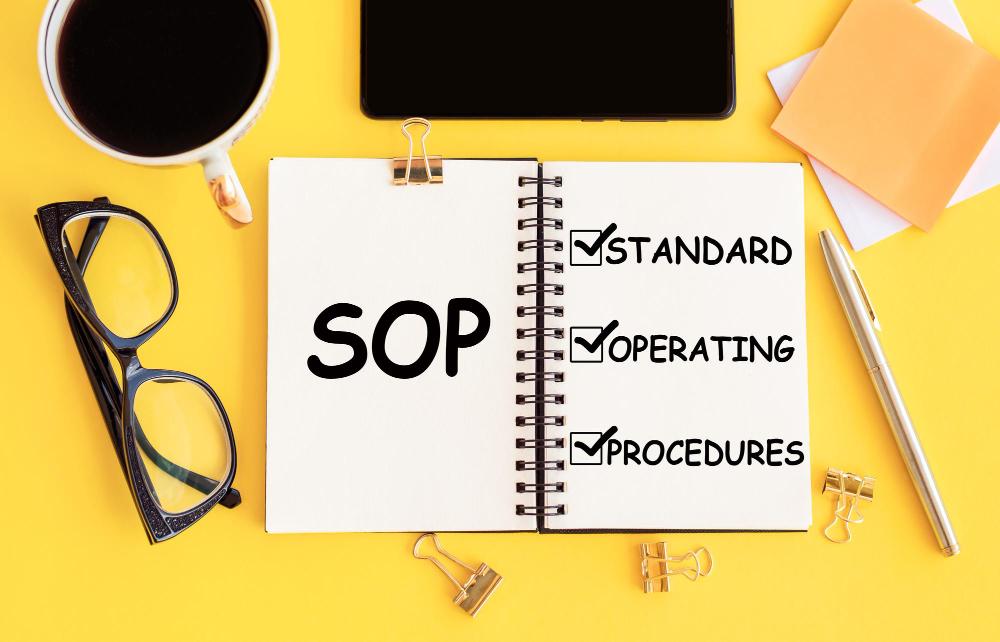The Ultimate (Statement of Purpose) SOP Guide: Definition, Importance, and Tips
-
Statement of Purpose, Statement of purpose format

Table of Contents
What is an SOP?
Scroll here ↓Why Is an SOP Important?
Scroll here ↓Statement of Purpose Format Guidelines:
Scroll here ↓SOP Format Overview
Scroll here ↓Sample SOP Structure
Scroll here ↓What to Include in Your Statement of Purpose:
Scroll here ↓Conclusion
Scroll here ↓What is an SOP?
An SOP, or Statement of Purpose, is a personal statement used in various application processes like university admissions, scholarship applications, or job opportunities. It provides a platform to articulate your intentions, qualifications, and future goals, helping evaluators understand why you’re a suitable candidate.
An effective SOP should not only highlight your qualifications and achievements but also offer a narrative that makes you stand out. It gives you a chance to present yourself as a motivated and unique applicant.
Why Is an SOP Important?
An SOP holds significant value in academic, professional, and scholarship applications. More than just a document, it’s your voice, reflecting your aspirations and helping evaluators assess your suitability for the opportunity you're seeking.
A Statement of Purpose (SOP) serves five key purposes:
1. Clarifies your purpose and long-term goals, showcasing your focus and commitment.
2. Highlights your qualifications, including academic achievements, work experience, and skills.
3. Personalize your application by sharing your unique story, experiences, and challenges.
4. Helps you stand out from others with similar qualifications by showcasing what sets you apart.
5. Demonstrates your communication skills, showcasing your ability to express ideas clearly and effectively.
By achieving these purposes, a well-written SOP can make a strong impression on admissions committees or employers and help you achieve your goals.
Statement of Purpose Format Guidelines:
To craft an effective SOP, thorough research and clear writing are key. Follow these formatting guidelines to create a well-structured SOP:
Formatting Guidelines:
- Font: Use Times New Roman, a standard font that's easy to read. The font size should be 12 points, which is the default size in most word processors.
- Margins: Leave a 1-inch margin on all sides (top, bottom, left, and right). This makes your SOP easy to read and provides space for comments or notes.
- Spacing: Use 1.5 line spacing, which is double spacing with an extra half-line of space. This makes your SOP easy to read and allows for clear separation between lines.
- Paragraphs: Divide your SOP into 5-7 paragraphs, each containing 150-250 words. This structure helps you organize your thoughts and keeps your SOP concise.
Writing Guidelines:
- Language: Use simple, clear language that's easy to understand. Avoid using slang, jargon, or overly technical terms that might confuse readers.
- Structure: Organize your SOP into an introduction, body, and conclusion. This structure helps you introduce your goals, provide supporting evidence, and summarize your main points.
- Relevance: Focus on experiences and qualifications that are relevant to your goals. This helps you stay focused and ensures that your SOP is effective.
- Proofreading: Ensure there are no grammatical errors, typos, or punctuation mistakes. Ask mentors or peers to review your SOP and provide feedback.
Word Count:
The ideal word count for an SOP is between 800 and 1,500 words. This range allows you to:
- Provide enough detail to support your goals and qualifications
- Stay concise and focused, avoiding unnecessary information
- Effectively convey your motivations and aspirations
Additional Tips:
- Use active voice instead of passive voice
- Use specific examples and anecdotes to illustrate your points
- Show, don't tell – demonstrate your skills and qualifications through specific examples
- Edit and revise your SOP multiple times to ensure it's polished and effective
By following these guidelines, you can create a well-structured, effective SOP that showcases your qualifications, motivations, and goals.
SOP Format Overview
Most universities follow a standard SOP format, which usually consists of 5–7 paragraphs. The SOP should open with an introduction to your background and goals, followed by detailed sections on your academic and professional experiences, and conclude with a summary and expression of enthusiasm for the opportunity.
Sample SOP Structure
Here's a detailed explanation of the sample structure for a Statement of Purpose (SOP):
I. Introduction and Goals (approx. 150-200 words)
- Introduce yourself and provide a compelling narrative that highlights your background, interests, and motivations.
- Clearly outline your career objectives, specifying the field, industry, or role you're targeting.
- Provide a thesis statement that summarizes your main goals and aspirations.
II. Academic Background (approx. 200-250 words)
- Highlight your educational achievements, focusing on:
- Relevant courses, subjects, or specializations that align with your goals.
- Academic accomplishments, such as awards, honors, or publications.
- Transferable skills, like research, critical thinking, or problem-solving.
- Emphasize how your academic background has prepared you for the program and your future goals.
III. Professional Experience (approx. 200-250 words)
- Discuss your work experience, emphasizing:
- Key skills and knowledge gained in each role.
- Achievements, accomplishments, or successes that demonstrate your capabilities.
- Lessons learned, challenges overcome, and growth experienced.
- Focus on how your professional experience has prepared you for the program and your future goals.
IV. Course Justification (approx. 150-200 words)
- Explain why you chose the course, highlighting:
- How it aligns with your career objectives and goals.
- Specific aspects of the course that interest you, such as curriculum, faculty, or research opportunities.
- How the course will help you achieve your goals and overcome any gaps in your knowledge or skills.
V. Future Plans (approx. 200-250 words)
- Outline both short-term and long-term goals, including:
- Immediate plans after completing the program.
- Long-term aspirations and how the program will help you achieve them.
- How you plan to apply the knowledge, skills, and experience gained from the program.
VI. University Selection (approx. 100-150 words)
- Research and mention specific reasons for choosing the institution, such as:
- Faculty expertise or research opportunities.
- Curriculum or specializations offered.
- Campus resources, location, or reputation.
VII. Conclusion (approx. 100-150 words)
- Summarize your readiness for the program, highlighting your strengths, achievements, and motivations.
- Reinforce your enthusiasm for the program and institution.
- Provide a final thought or call to action, leaving a lasting impression on the reader.
This structure serves as a general guideline, and you may need to adjust it based on your specific experiences and goals. Remember to tailor your SOP application to the program and institution you're applying to, and use specific examples to support your claims.
What to Include in Your Statement of Purpose:
- Your Story: Share unique experiences that have shaped your goals and make you stand out.
- Achievements: Highlight awards, work experience, or skills related to your goals.
- Career Goals: Clearly state your short-term and long-term goals and how they align with the opportunity.
- Why You're a Good Fit: Explain why you're a strong match for the institution, scholarship, or job role.
What to Avoid:
- Irrelevant Info: Stay focused and avoid unnecessary details.
- Negative Tone: Keep your tone positive and enthusiastic.
- Generic Phrases: Avoid using overused phrases that don't add value.
- Errors: Proofread carefully to avoid grammar, spelling, and formatting mistakes.
Conclusion
A Statement of Purpose (SOP) is an important document when applying to study abroad. It’s essential to make your SOP clear and focused, as it represents your personal and academic story. Writing a great SOP takes time, good research, and careful planning. Rushing it can lead to a weak SOP that doesn't show your strengths well.
Avoid giving any false or misleading information, as this could result in rejection or even being blacklisted. A strong SOP is honest, well-organized, and clearly explains why you're a good fit for the course.
If you're looking for expert guidance to study abroad and need help for the same, Global Grads study abroad advisors at Amity can help with study in usa for international students. For additional inquiry, get in touch with us. Wish you all the best.

Jayantanuj Das
Clark University
Jayantanuj is an expert in the field of study abroad and overseas education, currently managing the position of Graduate Counselor at Clark University Massachusetts. Jayantanuj holds a vast experience in the EdTech domain and has donned several professional hats in his career so far such as business development,customer service and customer relationship management, consulting and counseling, market research and training.

Find out Universities in the USA where you get Admission
Check your Admit Eligibility NowRecent Blogs
-

MiM vs MBA: Which MBA Alternative Gives the Fastest Career Lift?
09 November, 2025 Read More › -

How Do You Qualify for a US Student Visa? — A GlobalGrads Guide
23 October, 2025 Read More › -

Study Abroad Scholarships for Indian Students
23 October, 2025 Read More ›





